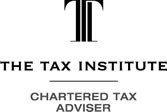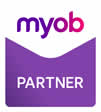The JobKeeper Payment is a Government scheme targeting support to business and not-for-profit organisations significantly affected by COVID-19, to help keep more Australians in work, and is administered by the Australian Taxation Office (ATO).
The Government has announced that the JobKeeper scheme will be extended for a further six months from 28 September 2020 until 28 March 2021.
There are changes in the way the scheme will operate and following is a summary of those changes and what JobKeeper 2.0 will look like.
What’s Changing?
- There are two (2) separate extension periods:
- Extension 1 for the period 28 September 2020 – 3 January 2021
- Extension 2 for the period 4 January 2021 to 28 March 2021
- For each extension period:
- An additional actual fall in turnover test will apply (this is different to the original JobKeeper test, which was a ‘once only test’.
- The rate of the JobKeeper payment is different.
Extension1
- You will need to show that your actual GST Turnover has fallen in the September 2020 quarter relative to a comparable period, which is generally the corresponding quarter in 2019.
What decline in turnover do you need to demonstrate?
- 50 per cent for those with an aggregated turnover of more than $1 billion;
- 30 per cent for those with an aggregated turnover of $1 billion or less; or
- 15 per cent for Australian Charities and Not for profits Commission-registered charities (excluding schools and universities)
The rates of the JobKeeper Payment will depend on the number of hours an eligible employee works, or a business participant is actively engaged in the business. The payment will be split into two rates, both less than the current payment of $1,500 per fortnight:
- Tier 1 – $1,200 per fortnight (before tax)
- Tier 2 – $750 per fortnight (before tax)
Extension 2 (you may be eligible for Extension 2, even if you don’t qualify for Extension1)
- You will need to further assess your turnover to show that your actual GST Turnover has fallen in the December 2020 quarter relative to a comparable period, which is generally the corresponding quarter in 2019.
The decline in turnover to be demonstrated is the same as for Extension 1 (refer above).
The payment rates applicable to this extension period are:
- Tier – 1 $1,000 per fortnight (before tax)
- Tier – 2 $650 per fortnight (before tax)
What do you need to do?
- Assess your GST Turnover for the appropriate period to make sure you can demonstrate the required decline in turnover for that period.
To assist with this, if you are registered for GST, it would be prudent to ensure all BAS lodgements are up to date.
- Work out if the Tier 1 or Tier 2 rate applies to each of your eligible employees and/or eligible business participant (a different rate may apply to different employees, depending on the number of hours worked).
- Notify both your eligible employees and the ATO what payment rate applies to them.
- Ensure that your eligible employees are paid at least the applicable amount per fortnight (either Tier 1 or Tier 2 rate).
(Note: The JobKeeper Payment remains open to new recipients, provided the eligibility requirements and turnover tests that apply during the relevant period are met.)
What isn’t changing?
- If your business and your employees passed the original eligibility tests to access JobKeeper, and you have fulfilled your wage requirements, you can continue to claim JobKeeper up until the last JobKeeper fortnight that ends on 27 September 2020.
- You don’t have to re-enrol if you are already enrolled for JobKeeper fortnights prior to 28 September 2020.
- You don’t need to reassess employee eligibility or ask employees to agree to be nominated by you as their eligible employer if you are already claiming for them before 28 September.
- You don’t need to meet any further/additional requirements if you are claiming for an eligible business participant.
- The JobKeeper Payment will continue to be made by the ATO to employers in arrears. Employers will continue to be required to make payments to employees equal to, or greater than, the amount of the JobKeeper Payment (before tax), based on the payment rate that applies to each employee. This is called the wage condition.
More information on JobKeeper 2.0 and how it may impact your business, may be found at:
For further information or assistance with jobkeeper, contact Veronica on 0402419798 or book a free consultation below.












